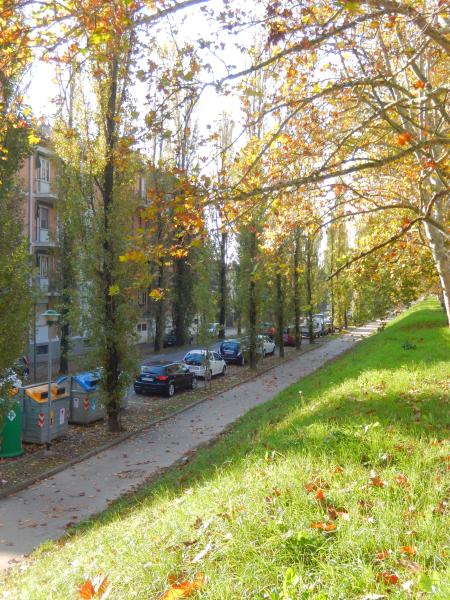
Area characterisation:
Urban area of Ferrara (Italy) with a population of 132,000 citizens. Green Infrastructure in public property areas.
Objective:
Identification of the Green Infrastructure at high resolution, i.e. not using land use cover, with GIS and assessment of the Ecosystem Services through the MAES (Mapping Ecosystem Services) methodology in urban area.
The study analysed also human-environment interactions, according to the resident population and with particular attention to the weaker groups, infants (0-5 years) and elderly (> 65 years). Ecosystem Services (ES) were selected in consideration of the population accordingly the CICES (Common International Classification of Ecosystem Services) classification. Among the available range were choose the ES services with the greatest impact on the population: 2 provisioning services; 5 Regulation & Maintenance services; 4 Cultural services.
The study lead to an ES Atlas and Action Plan for the enhancement of Green Infrastructures and Ecosystem Services as a strategy for the urban quality of the new General Urban Plan (PUG) of the city of Ferrara. The action plan was approved by the City Council.
Images
Potential impacts/benefits:
Wellbeing of citizens in public spaces, dust reduction, noise reduction, water flow regulation, microclimate regulation, improved pollination, improved recreation, sense of place, spiritual and mental well-being.
Actions:
The study lead to an ES Atlas and Action Plan for the enhancement of Green Infrastructures and Ecosystem Services as a strategy for the urban quality of the new General Urban Plan (PUG) of the city of Ferrara. The action plan was approved by the City Council.
Transferability of result:
Any urban area with available public spaces.
Organisations:
Istituto Delta Ecologia Applicata srl
Client:
Municipality of Ferrara
Design team:
Graziano Caramori
Elena Farnè
Contacts:
Graziano Caramori
grazianocaramori@istitutodelta.it
NBS goals:
- Enhancing sustainable urbanization
- Developing climate change adaptation
- Nature-based solutions for improving well-being in urban areas
NBS benefits:
- Developing climate change adaptation; improving risk management and resilience
- Increasing infiltration
- Reducing temperature at meso or micro scale
- Increase quality and quantity of green and blue infrastructures
- Improve air quality
- Increase amount of green open spaces for residents
- Increase communities’ sense of ownership
- Increase well-being
Publications and reports:
https://servizi.comune.fe.it/9473/piano-di-azione-sulle-infrastrutture-verdi-urbane
